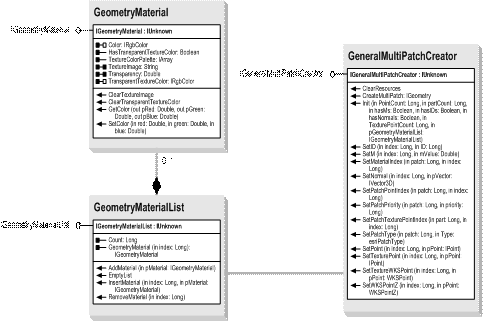
If you wish the tool to use fewer cores, use the parallelProcessingFactor environment setting. The maximum number of cores that can be utilized is limited to 4. For example, you can run the Viewshed tool to calculate the visibility or the solar radiation tools to calculate the rooftop solar energy potential for the buildings in an urban environment.Īdvantage of multicore processors. Add Field, Calculate Field Multipatch features Multipatch features 6 Merge all multipatches into one shapefile or feature class.

#Rasters to multipatch pro
Parallel processing in ArcGIS Pro is controlled by the Parallel Processing Factor. This is more than twice the number of tools that use parallel processing in ArcMap 10.6. I received 7 different raster files made of 7 layers and then I used 'Raster Calculator' to sum them all together and to have one final result. In ArcGIS Pro 2.1, 70 geoprocessing tools can run using parallel processing to split a job across multiple cores or processes on your desktop machine. With the resulting elevation raster, you can run other tools that operate on raster data to solve analysis problems in an urban space. Elevation raster (Esri Grid) Cross-section line Geology polygons Well and boring points Additional subsurface rasters. So finally I could convert multipatch file to raster using 'Multipatch to Raster' tool in ArcGIS Pro. Then use the Mosaic tool to mosaic the buildings raster with the DEM raster. To accomplish this, first use this tool to convert the multipatch features into a raster. This tool allows you to burn 3D building features (as multipatches) in an urban space into a Digital Elevation Model (DEM). Vertical triangles-essentially vertical walls without a roof-are excluded from the rasterization so will not be represented in the output raster.

An output cell will receive a value if the cell center falls within the footprint of one or more input multipatch features otherwise, it will be assigned NoData. In some places the road overlaps with different z values, see attached 'bilde1.jpg'. The maximum Z value from the points of intersection is assigned to the output raster. To determine the Z value for each cell, a vertical line is extended from the cell center location to intersect the input multipatch features. The output raster stores the Z values of the input multipatch features at each cell center location. Converts multipatch features to a raster dataset.


 0 kommentar(er)
0 kommentar(er)
